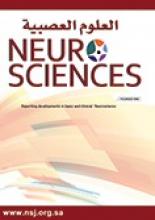Abstract
OBJECTIVE: To demonstrate the normal limits of Powers ratio and basion dens interval in patients with disc herniations.
METHODS: The MRI of patients were retrospectively evaluated by 2 radiologists. Four hundred and forty-five patients who were admitted to Duzce University Hospital with neck pain without history of trauma were chosen between January 2004 and July 2006 in this retrospective study. The patients were between the ages of 14-80 years.
RESULTS: Four groups were identified according to the number of disc herniations. The normal limits of Powers ratio and basion dens interval were 0.77+/-0.15 and 0.80+/-0.66 in group 0, 0.76+/-0.14 and 0.81+/-0.76 in group one, 0.75+/-0.13 and 0.80+/-0.71 in group 2, 0.76+/-0.14 and 0.81+/-0.74 in group 3, and 0.77+/-0.16 and 0.81+/-0.66 in group 4. The relationship between the number of disc herniations and Powers ratio and basion dens interval was not statistically significant.
CONCLUSION: Our results were in concordance with the previous studies concerning the Powers ratio and basion dens interval. These 2 methods can be used in the MRI of atlantooccipital dislocation suspected patients with disc herniations.
- Copyright: © Neurosciences
Neurosciences is an Open Access journal and articles published are distributed under the terms of the Creative Commons Attribution-NonCommercial License (CC BY-NC). Readers may copy, distribute, and display the work for non-commercial purposes with the proper citation of the original work.






